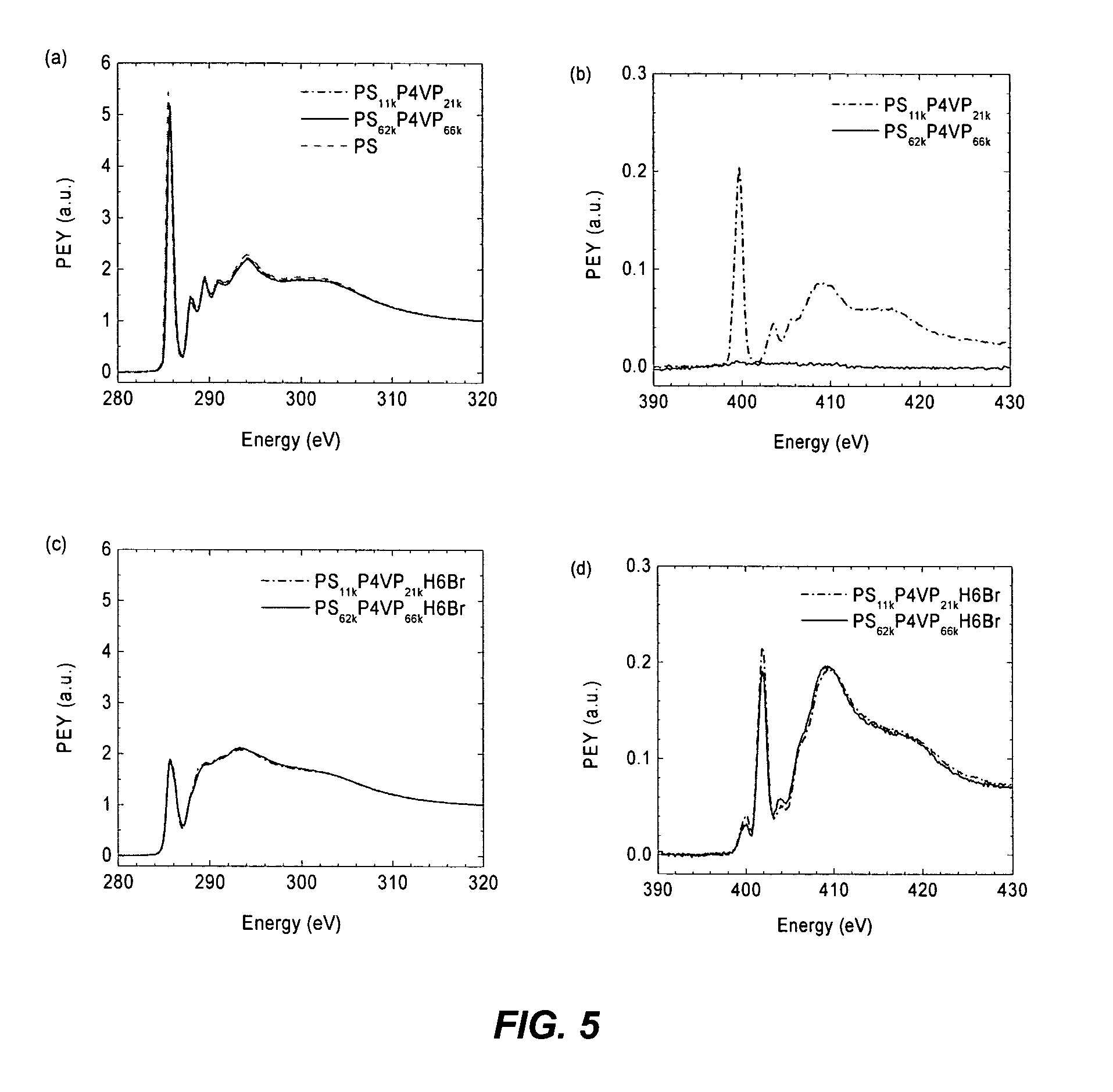Polymers containing quaternized nitrogen
a technology of quaternized nitrogen and polymer, which is applied in the direction of plant growth regulators, coatings, animal husbandry, etc., can solve the problems of increasing operating and maintenance costs, increasing fuel consumption by as much as 30%, and adding drag on the ship
- Summary
- Abstract
- Description
- Claims
- Application Information
AI Technical Summary
Benefits of technology
Problems solved by technology
Method used
Image
Examples
example 1
Preparation of Polymers Containing Pyridine or Pyridinium Groups
[0092] Synthesis of polystyrene-block-poly(4-vinylpyridine) by anionic polymerization. Polystyrene-block-poly(4-vinylpyridine) were prepared following a literature procedure (Förster et al. J. Chem. Phys. 1996, 104, 9956-9970), as illustrated in Scheme 1.
[0093] Polymerization was carried out in tetrahydrofuran at −78° C. using sec-butyllithium initiator. Styrene was stirred with dibutyl magnesium, and 4-vinylpyridine was dried over calcium hydride before distillation under vacuum. Tetrahydrofuran was refluxed over sodium / benzophenone complex and collected in a reaction flask containing lithium chloride (about 5 times the molar amount of sec-BuLi) by distillation.
[0094] The initiator (1.4 M solution in cyclohexane) was then injected, followed by the addition of styrene using a cannula. A small amount of the polymer solution was withdrawn from the flask after 45 minutes for molecular weight determination, and was term...
example 2
Characterization, Testing, and Evaluation of Polymer Coatings
[0111] The role of surface charge density on antibacterial activity has been recognized in some studies. For example, see Tiller et al. Biotechnol. Bioeng. 2002, 79, 465-471; and Kügler et al. Microbiology 2005, 151, 1341-1348. Bacterial death occurred only above a threshold value of surface charge density. The experiments described herein using surfaces of poly(4-vinylpyridine) block copolymers showed that besides the length of the pyridinium block, it is the number of pyridinium rings in the top few nanometers of the surface that determines the bactericidal activity. P4VP with a molecular weight of around 21 kDa was found to exhibit almost 100% bactericidal effect against S. aureus. Moreover, a surface wherein the pyridinium rings were densely covered by the alkyl side groups was found to be less effective than one in which the pyridinium rings were exposed. Near-edge X-ray absorption fine structure (NEXAFS) spectroscop...
example 3
Interaction of Ulva and Navicula Marine Algae with Surfaces of Pyridinium Polymers with Fluorinated Side-Chains
[0163] Introduction: The formation of a microbial biofilm of bacterial cells, algal spores, diatoms and protozoa is an important initial step in the marine biofouling process. Surfaces prepared using quaternized 4-vinylpyridine polymers are antibacterial and can prevent the formation of bacterial biofilms. The antibacterial activity of these polymers is believed to arise from the cationic binding of the cell membrane, resulting in a disruption of the membrane and subsequent leakage of the cytoplasmic materials. Ulva zoospores and Navicula diatoms are microalgae commonly encountered in biofilms that develop on ship-hulls. Both are unicellular organisms and attach to surfaces through extracellular polymeric substances (EPS) that are adhesive in nature.
[0164] Settlement of a free-swimming Ulva zoospore on a surface is influenced by physico-chemical properties of the surface ...
PUM
| Property | Measurement | Unit |
|---|---|---|
| Fraction | aaaaa | aaaaa |
| Fraction | aaaaa | aaaaa |
| Fraction | aaaaa | aaaaa |
Abstract
Description
Claims
Application Information
 Login to View More
Login to View More - R&D
- Intellectual Property
- Life Sciences
- Materials
- Tech Scout
- Unparalleled Data Quality
- Higher Quality Content
- 60% Fewer Hallucinations
Browse by: Latest US Patents, China's latest patents, Technical Efficacy Thesaurus, Application Domain, Technology Topic, Popular Technical Reports.
© 2025 PatSnap. All rights reserved.Legal|Privacy policy|Modern Slavery Act Transparency Statement|Sitemap|About US| Contact US: help@patsnap.com



